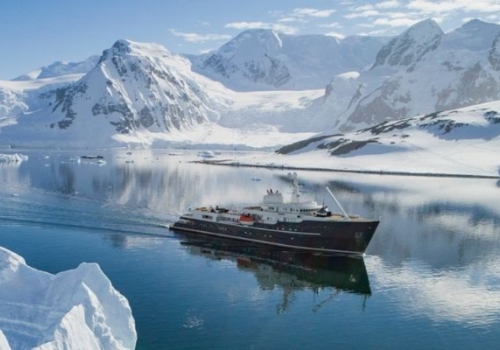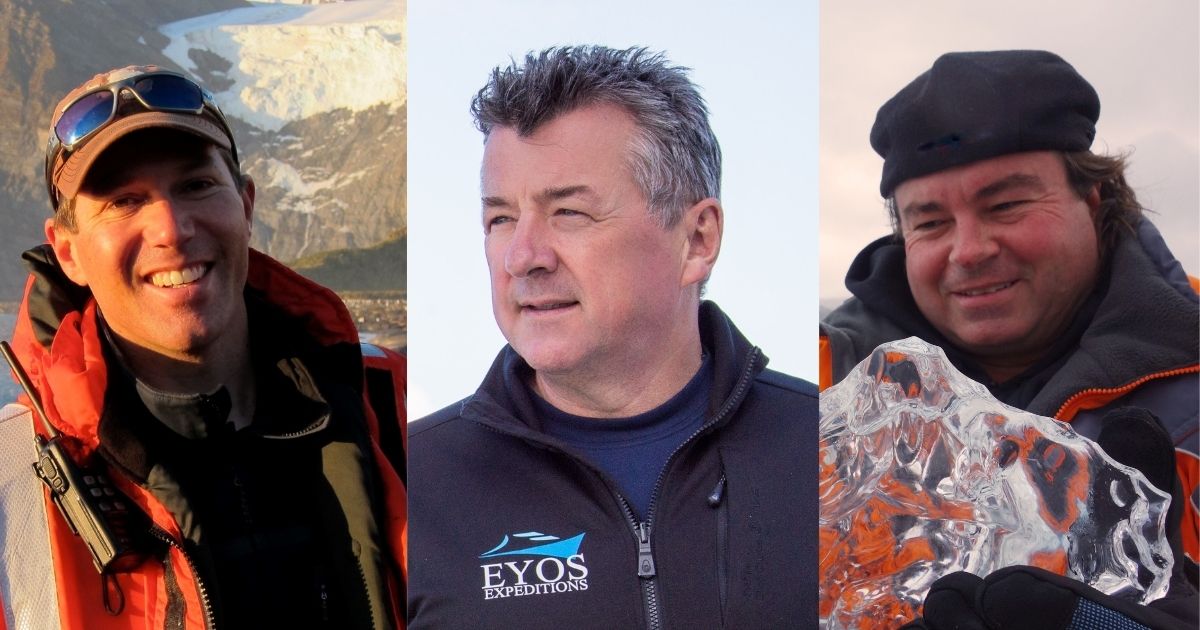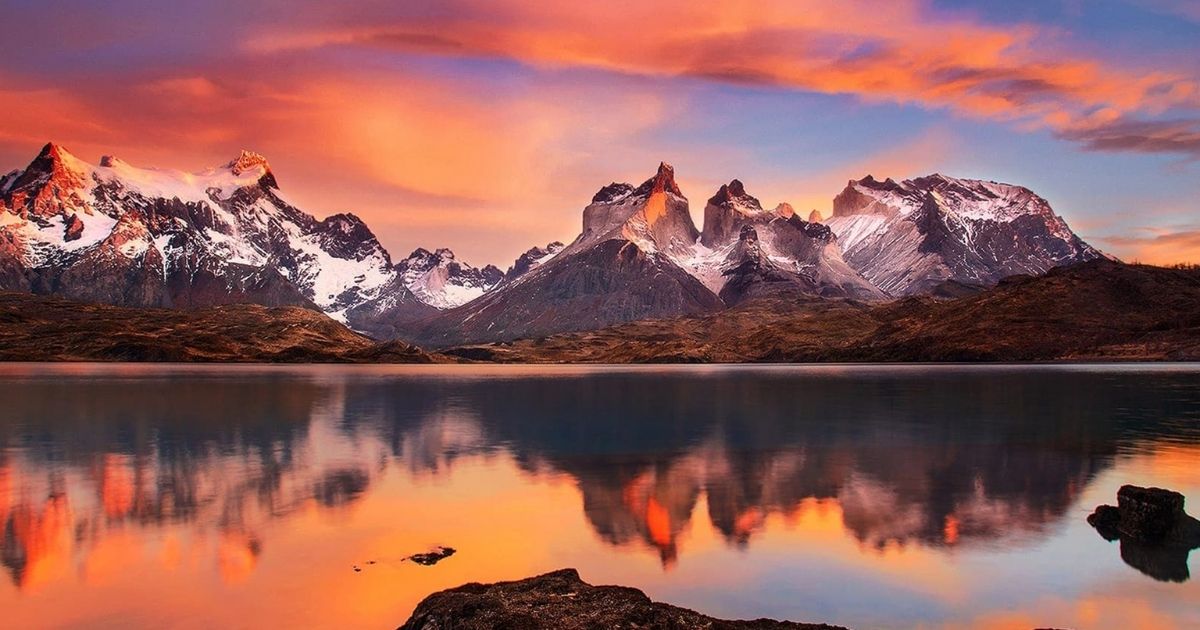
We've heard a lot over the last few years about superyachts seeking out more unusual destinations. While no-one is doubting the obvious appeal of classic locations such as the Mediterranean and the Caribbean, more off-the-beaten track regions are gaining traction with a growing band of adventurous owners and charterers.
Will far-flung destinations like the polar regions, Papua New Guinea, the Galapagos and Peru - to name but a few - eventually replace the traditional cruising grounds? And what is driving these changes? How has COVID impacted the choice of destinations open to superyachts and what has governed the final decision about where to cruise this summer?
To find some answers to these questions, I sought out individuals with first-hand knowledge of newer yacht destinations to ask what they thought was driving this market. Rob McCallum is the Founding Partner of EYOS Expeditions, a company that transports its clients by superyacht to cultural or wild destinations. “Owners and charterers want to experience pristine and authentic places, either in terms of nature or culture, and these tend to remain this way because they are remote and hard to reach,” he reasons. “I firmly believe more and more yachts will be used as vehicles to see the whole world.”
There is definitely a sense that a new breed of owner views their superyacht in a different way than their predecessor may have done. Indeed, the advancement of technological connectivity might already have facilitated the increased usage of yachts by their owners, enabling them to spend more working hours on-board, providing their Wi-Fi connection is good. The real difference, however, seems to be that many owners and charterers are waking up to the heightened potential for accessing places that are could be difficult to reach by other forms of transport.
Has the industry noticed this trend for seeking adventure in hard-to-reach places and how is it responding? Yacht builders appear to be moving more to bigger yachts with extended range, more amenities and capabilities to carry toys. “There are also plenty of yachts in the 25-70m size that are being designed as expedition yachts,” asserts Carlos Miquel, Founding Partner at Patagonia Antarctica Yacht Charters. “Through these yachts more remote destinations are made more accessible.”
Another important factor in driving demand to remote destinations is education. As owners and charterers cultivate an appetite for travelling to tucked-away places, how do companies in those destinations make sure that their attractions make their way onto superyacht itineraries? Putting lesser-known locations on the map can be a huge and potentially expensive task. For Carlos Miquel, the onus is on local companies “to promote and educate the industry about their destinations.” He goes on to make an important point, “Captains, owners and charterers [need to] lose their ‘fear’ of going.” Captains in particular want to know that all the services they need are available in unfamiliar areas. Once they have this reassurance that the right infrastructure is in place, they are more likely to speak positively of a destination to an owner or charterer, making the captain an important influencer in the decision of where to go next.

Left to right: Tim Soper, Rob McCallum, Carlos Miquel
With some sources claiming that tourism accounts for 1 in 10 jobs in the world`s economy, the promotion of different countries as yacht destinations should, many might reasonably say, also be the role of governments worldwide. Although as economies worldwide will strive to regain strength after the ravages of the COVID-19 pandemic, it`s anyone`s guess as to how much funding, public or private, may be available to stimulate marine tourism.
What then has been the impact of the pandemic on superyacht tourism in off-the-beaten track destinations? Clearly there are any number bewildering and ever-changing COVID-related restrictions around the globe that have interrupted the movement of people, planes – and yachts. Tim Soper, Rob's colleague and Founding Partner at EYOS, reports a strong interest this year in yachts visiting sparsely populated places, where nature and wilderness is the focus.
He also points to the need to be responsible when considering visits to certain areas. “The small, isolated communities of some Arctic nations are particularly vulnerable, so we have stayed away from these,” he explains. “We are currently preparing for our Antarctic season - as the last continent to be completely free of COVID it may seem extra appealing, but of course means a huge responsibility on our part to not bring the disease with us.” However, the company has managed expeditions to Greenland, Iceland, the tropical pacific & the remote Scottish Islands this summer, indicating resilient demand and the need for lateral thinking to identify suitable destinations.
There has been a lot of discussion over the last few months about how things “will never be the same” even once the pandemic is “over”. This remains to be seen, but for some in the yacht industry, the COVID era has shone a light on the benefits of private cruising in quieter corners of the globe. Once owners and charterers have seen these possibilities, the sense is that they will not look back. Rob McCallum is of this view and, as he told me, “It’s not just the desire to find an isolated beach or an uninhabited atoll; it is about the complexity of getting to the site and avoiding crowded airports. The wild places we work have always been seen as a little bit ‘out there’...but in a post-Covid world it is likely to become more of the norm.”
Charter companies are keen to emphasise the unique wildlife that can be seen in some far destinations, as well as unusual landscapes. The Northwest Passage, for instance, boasts amazing icy landscapes and wildlife such as polar bears and walrus. It`s also seen as one of the last frontiers of historic exploration, with yacht expeditions there following in the wake of great explorers. The solitude experienced in these locations can also be a big draw, representing a stark contrast with some of the better-known superyacht destinations.

Torres del Paine
There is also an increasing trend towards destinations that can easily accessed by private jet, and to those which are open to restricted entry by private yacht. Managing the logistics behind these trips can be demanding. “The challenge has been in managing the travel pathway to the yacht; a mix of testing, adaptable travel protocols and keeping each yacht COVID free,” explains Rob McCallum.
If we cast our minds back to the halcyon pre-COVID days, will some of the trends spotted then continue regardless? Carlos Miquel has seen a steady increase of yachts visiting Patagonia and Antarctica, observing that “visiting yachts are also getting bigger and staying longer as they discover and hear from other captains about Patagonia and Antarctica.” He adds, “One captain said that ‘Patagonia is like Norway, Northwest Passage and Alaska, all in one, but on steroids”.
For many owners or guests a visit to Patagonia, Cape Horn and Antarctica is like their “Everest”. A trip to this region carries enormous cachet, putting visitors in a select group of sailors. For contrast, some visitors combine a trip to Patagonia and Antarctica with visits to Panama, Costa Rica, Galapagos, Peru and the rest of Chile.
So will superyacht itineraries of the future be dominated by locations that we currently consider “remote”? Those in the charter business remain realistic, acknowledging the easy charms of the Med and the Caribbean. Tim Soper sums up, “I imagine that the classic destinations such as the Mediterranean and Caribbean will remain the most frequently visited by superyachts since these are the easiest and best-known destinations. But off-the-beaten track destinations such as the polar regions, will become more and more popular as yachts venture further afield.”
Find out more, join an expert panel, exchange ideas and network with others around the world:
Register here for the online conference on 25 September, 2020:
The Future of Superyachts, Business Aviation and Luxury Property.

Friday 25th September, 2020
Starting 11:00 - 18:00 CET
Lorna Titley is a Director at Quaynote Communications, a communications company specialising in PR & Marketing and Live / Virtual / Hybrid Conferences & Events for the Aviation, Maritime and Security Industries. 

Post your comment
You cannot post comments until you have logged in.
Login to post a commentComments
No one has commented on this page yet.
RSS feed for comments on this page | RSS feed for all comments